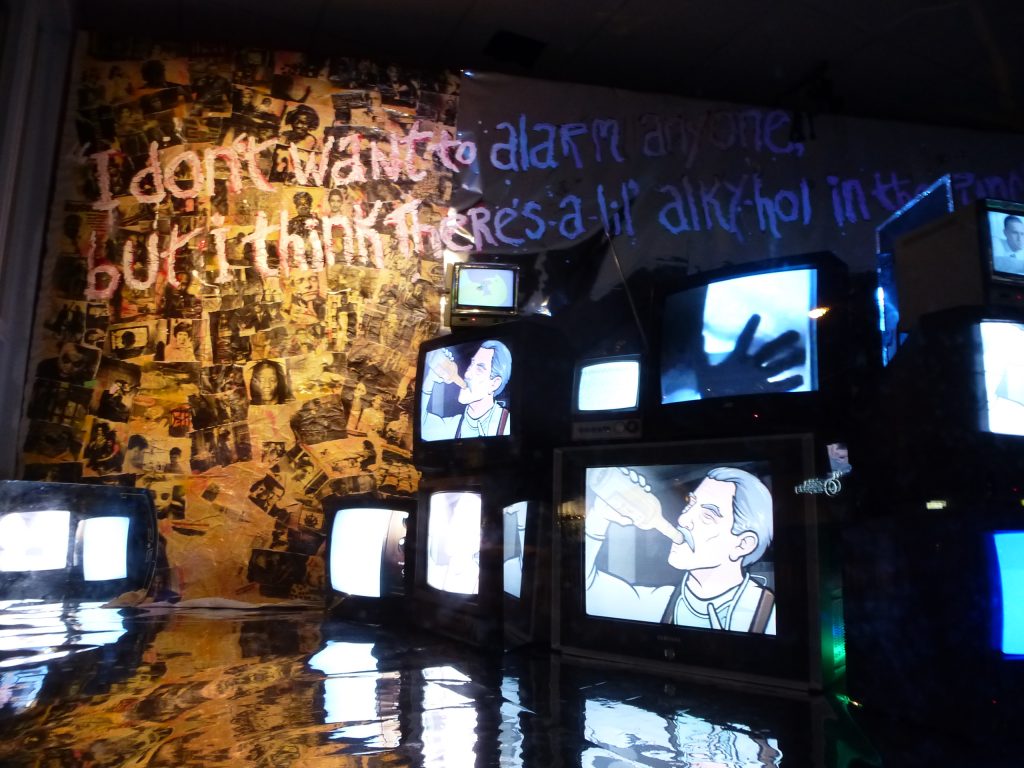
Jamie Wyld (Vital Capacities director): Thanks for being part of the Vital Capacities residency programme! Can you say a little about yourself and your work, perhaps in relation to what you’re thinking about doing during the residency?
Jaene Castrillon: I am a 2Spirit interdisciplinary artist, activist, author & award winning filmmaker who explores my relationship to the world through Indigenous teachings, ceremony and the wisdom of the land. I describe myself as a settler to Turtle Island of mixed heritages (indigenous Colombian & Hong Kong Chinese) who was raised on the teachings of Elder Isaac Day of Serpent River First Nations.
A a 1st generation settler to Turtle Island and Tkaronto, who is a queer female presenting person of color living with disabilities; I have survived abuse, institutionalization, homelessness and sex work. I found myself in Isaac’s lodge where I learned to feel and heal. Since then, my art has become an adventure that celebrates the brilliance and heart-break of living a life less ordinary. Creating an alternative to harmful notions around wellness, illness and worthiness, honoring art as medicine.
“Mourning Song” explores my relationship to the world through my blood memory as an Indigenous person of Chinese and Colombian descent. I was born in Canada but raised in Hong Kong, returning to Canada at 16 as a “parachute kid” meaning I was an unaccompanied minor.
Globally there has been an Indigenous resurgence, some believing we are in a time of prophecy. We are in a fight for our collective Spiritual survival and evolution. Acknowledging we can no longer live in an unjust world that keeps harming us I plan to explore this idea using the dichotomy of Fire/Water.
JW: One of the aims of Vital Capacities is to create an accessible site (so more people can use it) – how do you think this will be an opportunity to develop your way of working?
JC: As a disabled person I am always looking for ways to learn and present my work in an accessible fashion. I am looking forward to making my work accessible to people with disabilities and learning more about what that means.
Some of the things I will be looking to incorporate for my work will be closed captioning, described audio and possibly experimenting with soundscapes that have frequencies that can be felt by people who are seeing impaired. I also want to present my work with a larger font and simple graphics and presentation so that people with brain injuries or data processing disabilities are able to enjoy the piece as well.
JW: What would you like to achieve through the residency? Is there a particular project you’ll be focusing on?
JC: “Mourning Songs” is part grieving, part ode, part healing; as if casting a spell of love and protection for the people of Hong Kong by deconstructing my fierce loyalty to self which includes my Asian identity as a Chinese person who grew up in Hong Kong. While this piece acknowledges the pain of our past and present, it is ultimately a piece filled with love and optimism. I believe and am hopeful for the futures of our peoples. I make this with my heart as an act of love, prayer and offering to the people of Hong Kong, and my heart will always be like water, a Hong Konger.
Presentation:
This will consist of the main tableau on a main larger screen space in the centre projecting layered images. Surrounded by the main tableau is 7 smaller installations on the video Background:
In 1989, I was in Hong Kong–a 13 year old. I remember our whole family huddled together around the TV waiting for the 6 am deadline. We knew something was supposed to happen, we could feel the tension in the air all day. My uncle’s friend was right in Tiananmen Square, he called after the tanks and hail of bullets started, terror in his voice. Suddenly life would forever be changed for many of us Chinese people. I remember thinking but that’s our Government and they are killing us? This is the birth of my life as an activist. Millions of us Hong Kong Chinese took to the streets.
30 years later I sit in Canada watching the Hong Kong protests unfold to the mantra of “add oil” (Collective)and later, as the police and government sanctioned violence escalated – be water. Perhaps rebellion and revolution is in my blood being a Hong Konger and someone who is Colombian. As this theme begins to manifest in my life, I research what it means live in this unprecedentedly changing world. of each teaching unlayered. Honesty and Kindness frame the Eastern direction of the main tableau, Caring and Sharing, underneath it, Respect and Strength to the Western Direction of the Main Tableau frame and finally Humility on top of the tableau.
Main tableau 10 – 20 minutes
Surrounding tableau each 1 – 2 minutes
JW: How do you see the next few weeks unfolding? Where would you like it to take you?
JC: I am looking forward to being challenged and presenting work with accessibility prominently featured and designed into the piece direct. I wanted to learn more about sourcing materials from online sources and how to legally work with these sources in an ethical and professional way. I am looking to hear/see other artists work developed as part of this program and watch their projects unfold.
I am looking forward to making this piece without any outside help. Because of COVID and because I am immunocompromised, I am unable to leave the house or get someone to help me. It will be an interesting challenge for me as a disabled person to shoot and document myself in this piece technically while trying to maintain some objectivity while ensuring this piece is as accessible as possible.
Visit Jaene F. Castrillon’s studio to learn more about her work.
♡